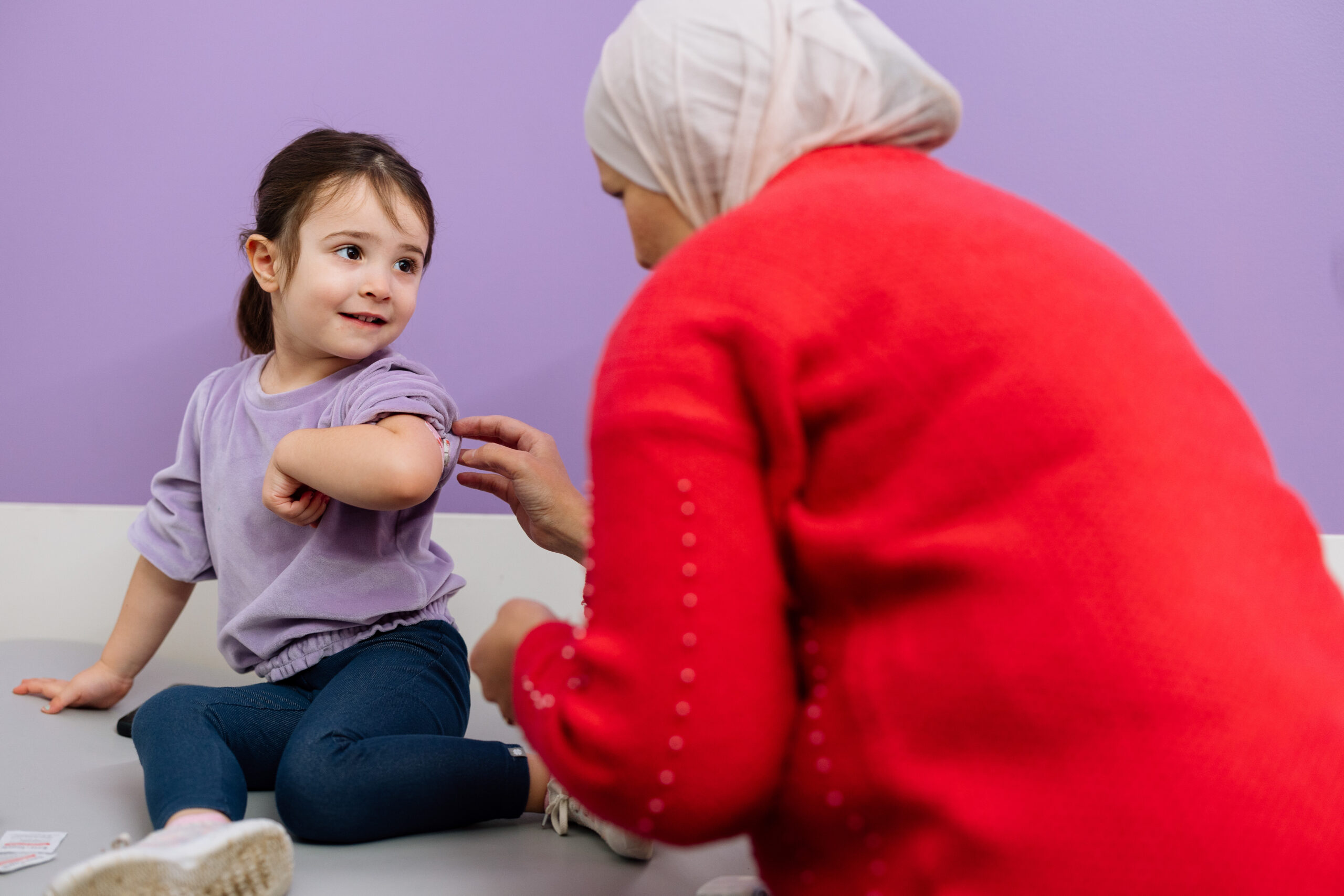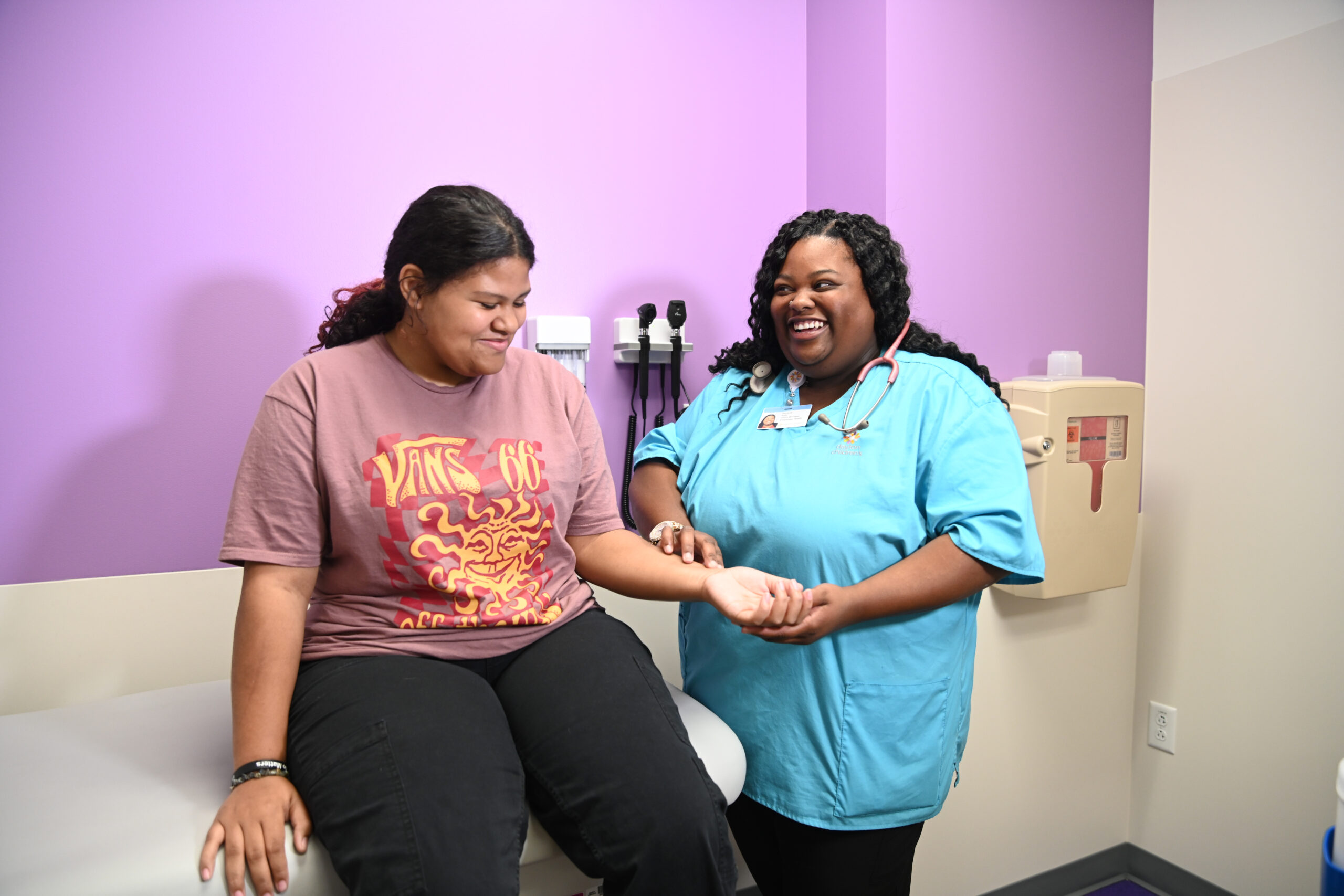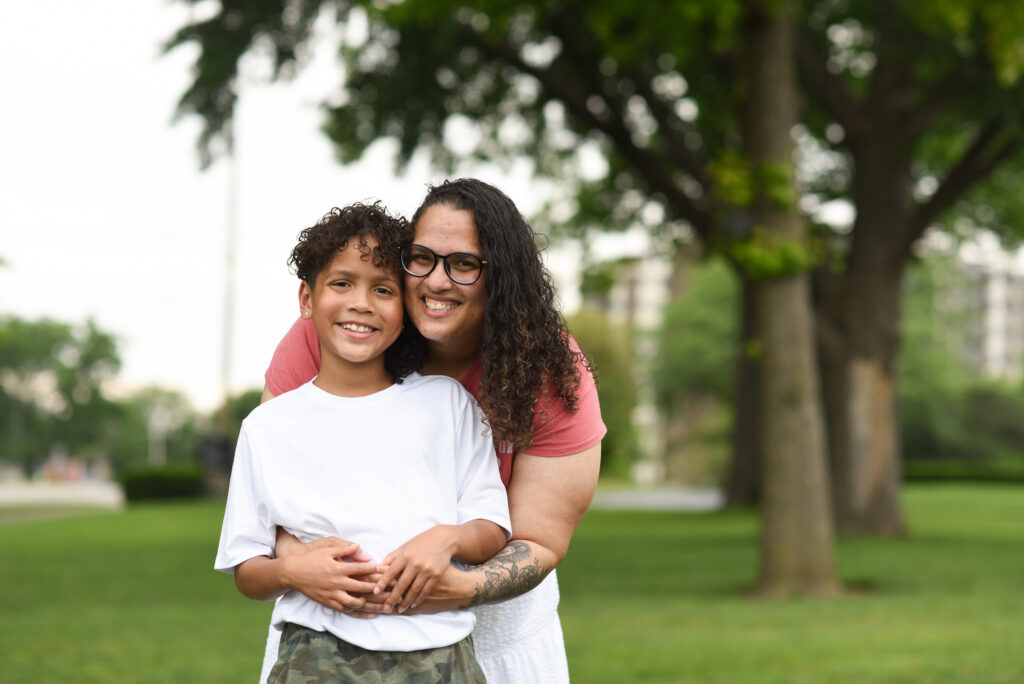pediatric endocrinology and diabetes
Expert care for children and teens with hormone, growth and diabetes concerns – delivered with compassion and family-centered support.


what is pediatric endocrinology?
Pediatric endocrinology focuses on diagnosing and treating disorders of the endocrine system in children, including hormonal imbalances, growth and puberty issues, thyroid disorders, and both type 1 and type 2 diabetes. At Dayton Children’s Hospital, our pediatric endocrinology specialists provide care for children and teens with these conditions using a compassionate, child-friendly approach. Your child will likely stay with the same endocrinologist throughout their care journey, ensuring continuity and trust as they grow.
when to see a pediatric endocrinologist
Wondering when to see an endocrinology doctor or provider? Your child’s pediatrician may refer you to a pediatric endocrinologist for:
- Delayed or early puberty
- Unexplained growth concerns
- Diabetes or frequent high/low blood sugar
- Thyroid or adrenal problems
- Concerns about weight gain or metabolism
If your child shows signs of a hormonal imbalance or other endocrine disorders, seeing a specialist can help ensure proper growth and long-term health.

why choose pediatric endocrinology and diabetes at Dayton Children’s?
Whether your child needs routine testing, help managing a chronic condition like diabetes, or support through growth or puberty changes, our team is here every step of the way. We offer family-centered care that includes not only board-certified endocrinologists, but also nurses, dietitians, social workers, and psychologists who work together to provide the most comprehensive support possible. Your child will likely stay with the same endocrinologist throughout their care journey, building trust and consistency in their care as they grow. From early concerns to long-term management, we’ll create a personalized plan that helps your child thrive

take the next step
Our pediatric endocrinology team is here to help your child grow, thrive, and feel their best. Whether it’s a new diagnosis or ongoing care, we’ll work with you to create a plan that fits your child’s needs and supports your whole family. Schedule an appointment online or call 937-641-4000.
meet our pediatric endocrinology team
Our pediatric endocrinology and diabetes team includes board-certified endocrinology providers, nurse practitioners, certified diabetes educators, dietitians and support staff, all working together to provide family-centered care. From your child’s first lost tooth to their high school graduation and beyond, we are your partners to help manage their endocrine or diabetes needs.
conditions our pediatric endocrinology specialists treat
Our pediatric endocrinology team specializes in diagnosing and managing a wide range of endocrine disorders in children, from diabetes and thyroid conditions to growth, puberty and adrenal issues. We also provide care for complex genetic and metabolic conditions. Whether your child is facing a common concern or a rare disorder of the endocrine system, our team supports long-term health and development.
- Acquired Hypothyroidism
- Addison’s disease
- Adrenal insufficiency
- Congenital adrenal hyperplasia
- Congenital hypothyroidism
- Cortisol excess (Cushing’s disease)
- Cystic Fibrosis related diabetes
- Delayed puberty
- Diabetes (type 1)
- Diabetes (type 2)
- Diabetes insipidus
- Disorders of calcium and phosphorus regulation
- Early puberty (precocious puberty)
- Failure to thrive
- Graves’ disease
- Growth hormone deficiency
- Hyperinsulinism
- Hypoglycemia
- Hypophosphatasia
- Hypopituitarism
- Hypothyroidism
- Insulin resistance
- Klinefelter Syndrome
- Multiple Endocrine Neoplasias (MEN)
- Noonan Syndrome
- Parathyroid disorders
- Pituitary dwarfism
- Polycystic ovary syndrome (PCOS)
- Prader-Willi Syndrome
- Rickets
- Septo-optic dysplasia
- Short stature
- Turner Syndrome
- Vitamin D deficiency or resistance
programs & clinics for endocrinology conditions
Dayton Children’s offers specialized care for children with endocrine disorders through its diabetes, endocrinology and prediabetes clinics.
Our diabetes program provides multidisciplinary support for type 1 and type 2 diabetes, focusing on education and helping children confidently manage their condition as they grow. Recognized by the American Diabetes Association, the program includes endocrinologists, certified diabetes educators, dietitians, social workers and psychologists dedicated to each patient’s well-being.
The endocrinology clinic treats a wide range of conditions beyond diabetes, including growth disorders, thyroid and adrenal diseases, pituitary disorders and complex genetic syndromes affecting hormonal balance. Most care is outpatient-based, with close monitoring and plans that evolve as the child develops. Our team supports patients through their transition to adulthood and collaborates with primary care providers and other specialists when needed.
The prediabetes clinic focuses on children at risk of developing type 2 diabetes due to elevated blood sugar or insulin levels. This program emphasizes lifestyle changes, nutrition and, when necessary, medication to prevent progression to diabetes. The clinic works closely with families to develop healthy habits and offers coordinated care involving dietitians, medical staff and additional specialists for related health concerns.
Together, these programs provide care designed to support children and their families through diagnosis, treatment and ongoing management of endocrine health.
endocrinology news and blogs
Stay informed with the latest on pediatric hormone health, including seasonal tips, growth and development guidance and advice for managing endocrine conditions and diabetes.
patient stories
Our patients inspire us every day. From managing type 1 diabetes to overcoming early puberty challenges, their journeys highlight how specialized care and family-centered support make a lasting impact.
See how Dayton Children’s endocrinology team has helped families take control of their child’s health and thrive.
for your visit
Here’s what to know before your child’s endocrinology appointment. For patients with type 1 and type 2 diabetes, view our resources page for more details on preparing for your appointment and what to expect.
- Bring: Recent lab work, medical history and a list of current medications
- Wear: Comfortable clothing for physical assessments
- Expect: A detailed discussion of symptoms, growth tracking and a treatment plan
- Ask: About diagnosis, long-term care goals and how to support your child’s condition at home
Get checklists, resources, and helpful tips for before, during, and after your visit to Dayton Children’s—so you know exactly what to expect.
diabetes resource center
Managing your child’s diabetes can be stressful. We are here to help support your child and family with the right tools and guidance. Current patients can access helpful resources, including our type 1 diabetes manual, meal planning tips and education on type 2 diabetes. We are also available on MyChart or by phone for any questions you may have.
hour and locations
Our team is here to support your child’s health at multiple convenient locations.
FAQs
If your child is showing signs of early puberty, poor growth, unexplained weight gain or loss or unusual fatigue or thirst, your pediatrician may recommend a visit to an endocrinology specialist for further evaluation.
Some endocrine disorders are temporary and resolve with treatment, while others, like type 1 diabetes, require long-term management. Your child’s care team will explain what to expect and guide you through treatment options.
Yes, certain disorders of the endocrine system can impact mood, energy and focus. Proper diagnosis and treatment can help improve your child’s well-being both at home and in school.
Often, yes. Blood tests help measure hormone levels and provide important information for diagnosis and treatment planning. Our pediatric endocrinology team takes steps to make the experience as comfortable as possible.
Hormones regulate essential functions like height, weight, puberty and metabolism. When something disrupts this balance, an endocrinology provider can evaluate for possible disorders of the endocrine system.
here when you need us
Whether you’re looking for the right provider, ready to make an appointment, or need care right now—we’re here to help you take the next step with confidence.
